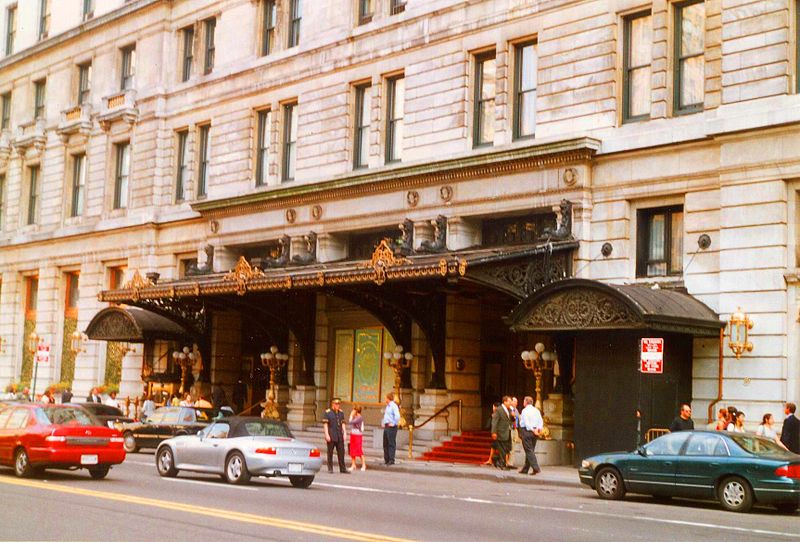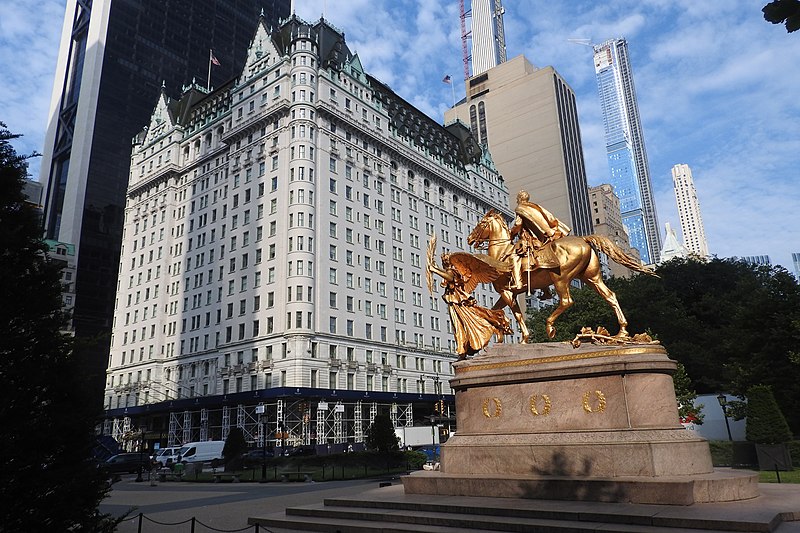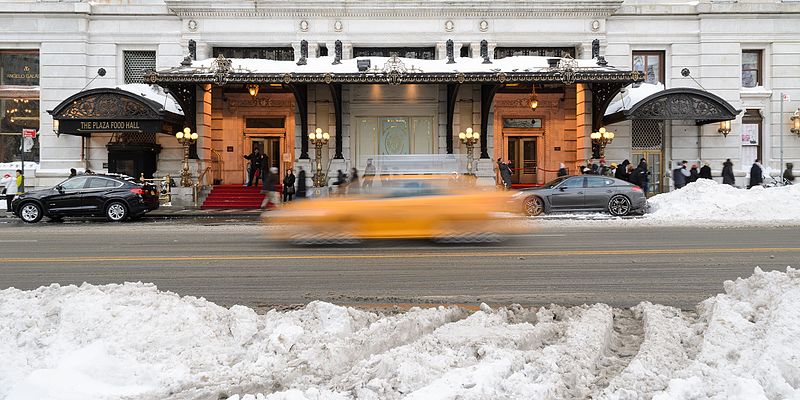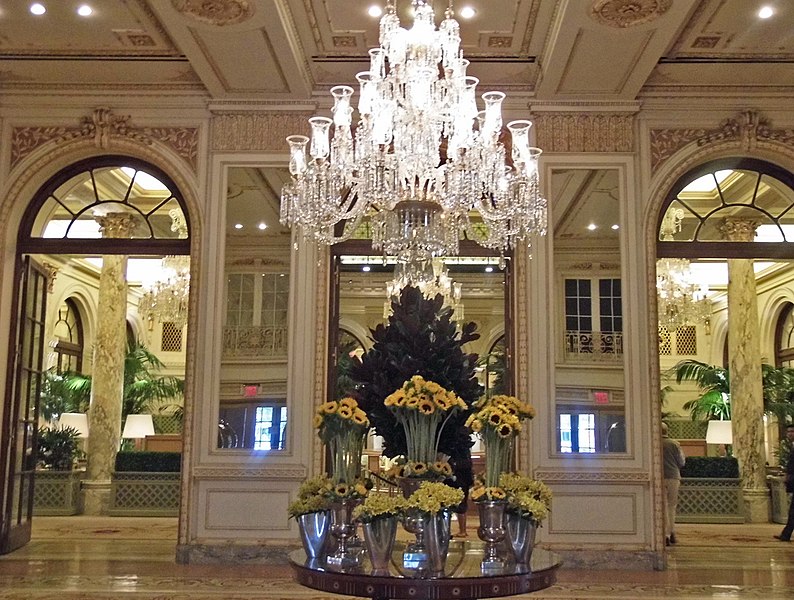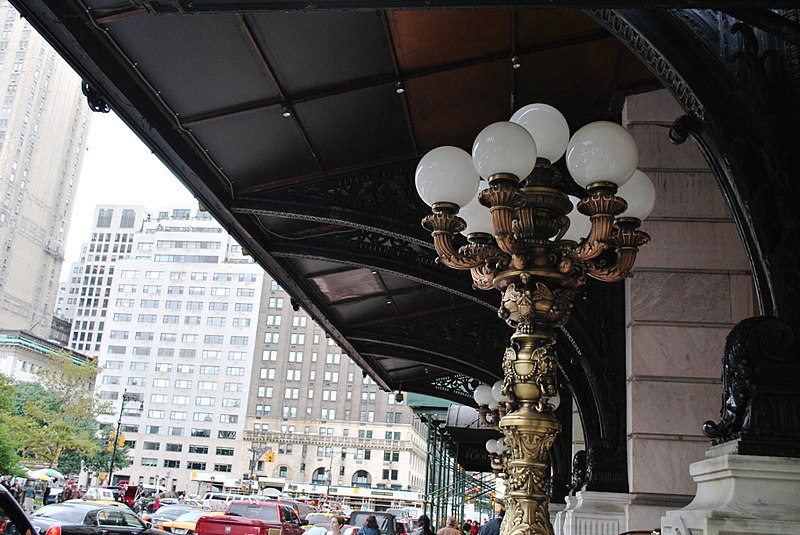Background
One of America’s most renowned hotels, The Plaza opened its doors on October 1, 1907, amid a flurry of astonishing headlines proclaiming it as the best hotel in the world. It was reportedly claimed, “Nothing unimportant ever happens at The Plaza.” The most upscale neighborhood in New York City is home to this premium hotel, which is situated at Fifth Avenue and Central Park South. The most renowned hotel in the world has a rich history, from its initial 19th-century construction through its beautiful $450 million restoration in 2008.
History of Plaza Hotel
The Plaza, a U.S. National Historic Landmark, has been one of New York City’s most recognizable locations since the early 20th century. However, the existing hotel is a second iteration. When three would-be hoteliers made the decision to build a spectacular boutique hotel on the site of the New York Skating Club in upper Manhattan in 1883, the first incarnation of The Plaza initially emerged. The New York Life Insurance Company was forced to foreclose on the entire project since the builders were unable to secure the funding needed to complete the project.
The bank, who happened to be in charge of the structure, commissioned the eminent architectural firm McKim, Mead and White to finish it. The original hotel was entirely constructed over the course of around 27 years. Fred Sterry, Harry S. Black, and Bernhard Beinecke became the new proprietors of the building by 1905, thanks to the New York Life Insurance Company. The three guys quickly realized that the hotel couldn’t accommodate the rising demand from its guests due to its limited size. As a result, they later tore down much of the hotel and built a far grander one on the same site. The men didn’t cut any corners. They employed architect Henry J. Hardenbergh to create the full layout for their grand plan. Hardenbergh employed only the finest materials while designing the hotel in the manner of a French castle, featuring magnificent wood paneling and precious marble from all around the world. He even gave L the single-largest order for gold-encrusted tableware in history. A purchase order for 1,650 crystal chandeliers was placed with Straus & Sons.
The current version of The Plaza made its premiere on October 1, 1907, after spending almost two years and $12.5 million to finish. An elaborate horse-drawn carriage arrived at the entryway as the doors opened that morning. The wealthy millionaire Alfred Gwyne Vanderbilt, a great-grandson of Commodore Cornelius Vanderbilt, traveled aboard as one among its passengers. He was a well-known railroad mogul who wanted to create news by becoming the first person to reserve a room. With Vanderbilt’s entrance, a lengthy history of famous people from throughout the world visiting the hotel began. The Plaza hosted several of the most well-known figures of the 20th century, including Greta Garbo, Elizabeth Taylor, Richard Burton, and Frank Sinatra.
At the height of the Second World War, Conrad Hilton paid $7.4 million to purchase the hotel. He renovated the entire building for an extra $6 million, opening the fabled Oak Room in the process. However, Hilton would later sell A.M. the hotel’s rights. About ten years later, Sonnabend began to gather funds to build for the neighboring Savoy-Plaza Hotel. For the following 18 years, Sonnabend oversaw management of The Plaza through his company, Hotel Corporation of America (HCA). The Plaza was subsequently sold by Sonnabend to Westin International Hotels in 1973, who changed its name to “The Westin Plaza.”
The Plaza is currently owned by Katara Hospitality, but Fairmont Hotels and Resort still runs it. While yet retaining its magnificent historical elegance, this amazing historic hotel offers the newest in modern luxury for the modern tourist. Few locations in central New York City are better for a historic holiday than The Plaza, a member of Historic Hotels of America since 2011.
Quick Facts about Plaza Hotel
The first Plaza was not the hotel that now occupies the location at Fifth Avenue and 58th Street. The modern hotel is 19 storeys tall, however the former 8-floor building could not be built upon, therefore it had to be entirely destroyed in order to make room for a larger construction. The original structure existed from 1890 until 1905. Here are a few short facts on the hotel.
- When The Plaza originally welcomed guests in 1907, accommodations started at $2.50 per night (about $60 per night now).
- In the hotel’s Oak Room in 1969, members of the National Organization for Women demonstrated against the city’s male-only rules. A few months after the demonstration, the Plaza stopped hosting its men’s-only luncheon.
- The Plaza Accord, which included delegates from the U.S., Japan, France, and other nations to discuss economic difficulties, was held in the hotel in 1985. In order to strengthen its export products business with international markets, the United States made the decision to weaken its currency at this point.
- It turns out that the well-known image of Eloise that hangs in the hotel’s Palm Court is a substitute for the original, which was stolen and has never been recovered.
- The Beatles stayed at The Plaza when in New York on their first trip to the country (during a tour in 1964). They had the entire wing to themselves, composed the song “Michelle” there, and removed all the closet hangers before leaving.
- Before departing to build a restaurant in Cleveland, Ettore “Hector” Boiardi, now known as Chef Boyardee, used to work at the hotel, rising to the position of head chef.
- To commemorate the publication of his novel In Cold Blood, Truman Capote hosted the famed Black and White Ball, which featured celebrities like Frank Sinatra and Mia Farrow.
- The first person to sign the hotel’s guestbook was Alfred G. Vanderbilt.
- Previously, Gourmet Magazine’s offices and test kitchen (located in the penthouse) were housed in The Plaza. The kitchen’s wine storage housed 1,500 bottles of wine, and each employee got a bedroom that served as an office.
- Surprisingly, the fifth level or lower of the Plaza is where you’ll discover the greatest apartments and accommodations. Why? Using elevators wasn’t very common because they had just entered the market. As a result, the more prominent visitors stayed on the lower floors while the employees remained on the upper floors.
- One of the first of its sort to allow pets was the Plaza Hotel. Princess Elisabeth Vilma Lwoff-Parlaghyof Russia brought her cats, dogs, guinea pig, owl, pig, ibis, alligators, a little bear, and twelve staff after being turned away from the Waldorf Astoria. The group stayed at the motel for five years, occupying 14 rooms.
- There have been numerous notable owners of the Plaza Hotel, including Conrad Hilton and Donald Trump.
- The hotel was given historic designation by the NYC Landmarks Preservation Commission in 1969, and the Plaza was designated a National Historic Landmark in 1986.
- In the “Persian Room,” a nightclub within the Plaza Hotel’s Fifth Avenue location, Miles Davis recorded an album.
- When a murder took place in July 1906 while work was being done on the present Plaza, journalists were outraged. The incident, known as the “Midair Murder,” began as a labor dispute, which resulted in watchman Michael Butler being struck in the head with a wrench and dying after falling three floors (from the eighth to the fifth).
- The first taxi taxis in the city were introduced with the inauguration of the new Plaza Hotel, and they were parked beside the hotel’s entrance on the first day of operation.
- Nearly 300 rooms—282 to be exact—including 102 suites are available at The Plaza.
Architectural Style of Plaza Hotel
The Plaza Hotel is situated in a noteworthy area with a view of Central Park. The Fifth Avenue lobby vestibules, the 59th Street lobby, the Edwardian Room, the Grand Ballroom Foyer, the Main Corridors, the Oak Room and Bar, and the Terrace Room Corridor make up the Hotel Plaza’s interior.
As he established guidelines for the outside and interior design of his buildings, Hardenbergh was one of the most well-known architects of his day. The white and Breccia marble masonry of the 59th Street Lobby and Main Corridor is beautifully veined and precisely matched. The west wall of the German Renaissance Revival-style Oak Room is covered in wood paneling with intricate carvings, castle paintings, and a coved plaster ceiling. A paneled wood wainscoting and an intricate trussed ceiling with carved bosses, stenciled embellishments, and mirrors are hallmarks of the Spanish Renaissance Revival Style Edwardian Room. The Palm Court has Caen stone walls with Caen stone caryatids depicting the Four Seasons on the west wall, a colonnade of marble columns dividing the area from the main hallway, and massive orders of highly polished marble pilasters as accents.
The hotel faces Fifth Avenue to the east but is divided from it by the Pulitzer Memorial Fountain, which is a component of Grand Army Plaza, which runs from 58th Street to 60th Street and ends with the enormous equestrian monument of General Sherman by Augustus Saint-Gaudens. One of the few squares of this caliber that exist in New York City, the entire region has a European square-like design. The use of materials and the treatment of the façade at least makes an attempt to link the nearby buildings, despite their lack of aesthetic cohesion.
Representation in Movies and/or TV Shows
The Plaza has been the go-to New York hotel for almost a century. The Plaza has hosted kings, presidents, and actors from both the stage and the cinema. The renowned hotel has served as the location for extravagant social events and vintage Hollywood movies alike. Here are some of the films we all love:
North by the Northwest (1959)
The Plaza first appears prominently on the big screen in Alfred Hitchcock’s timeless thriller North by Northwest. One of North by Northwest’s iconic moments takes place in the Oak Bar, when Cary Grant is abducted but swiftly escapes by the door on Fifth Avenue (by the year 2000, The Plaza had become New York’s most well-liked film location).
The Way We Were (1959)
The sixth-best love story in American film, according to AFI’s 100 Years… 100 Passions poll, was featured in the 1973 romantic comedy starring Robert Redford and Barbara Streisand. In a well-known sequence, Barbara Streisand’s character Katie and Robert Redford’s character Hubbell randomly cross paths at The Plaza’s Fifth Avenue entrance.
The Front (1976)
Woody Allen and Zero Mostel are featured in the 1976 comedy about the Hollywood blacklist. Many actors, writers, and directors were rendered unemployed by the blacklist if they were thought to be communist sympathizers. One scene in The Front takes place in a suite at The Plaza and is set in New York City in the early 1950s.
Home Alone 2 (1992)
The 1992 hit film Home Alone 2 extensively featured The Plaza. During his unsupervised stay at The Plaza while stranded in New York, Macaulay Culkin (Kevin) gets into mischief.
Sleepless in Seattle (1993)
Bill Pullman (Walter) stays at The Plaza after arriving in New York in this vintage romantic comedy starring Tom Hanks, Meg Ryan, and Bill Pullman. He meets up with his fiancée Meg Ryan (Annie) in front of the Fifth Avenue entrance in a well-known scene.
Bride Wars (2009)
Final scene with Kate Hudson and Anne Hathaway was shot in The Palm Court. Even though the majority of the filming took place at The Plaza’s sister hotel, the Fairmont Copley Plaza in Boston, because The Plaza was still undergoing renovations, the story was set there.
The Great Gatsby (2013)
The Plaza serves as the backdrop for the pivotal moment in Scott Fitzgerald’s renowned book of the same name. Leonardo Dicaprio played Jay Gatsby in the Baz Luhrman-written and -directed movie, which also starred Tobey Maguire and Carey Mulligan.
Conclusion
The Plaza Hotel in New York City has a rich past. There were numerous people living in the luxurious hotel, including residents, guests, employees, and proprietors. From the early 20th century until the present, The Plaza was crucial to the development of New York City’s society. The Plaza Hotel has survived several generations of socioeconomic transformations, fashions, and political movements while continuing to adapt to its surroundings. The Plaza Hotel is one of the most stunning and recognizable hotels in America, whether it is due to the building’s constant outside architecture or the interior’s dynamic design. The structure was featured in a couple vintage Hollywood blockbusters. The Plaza Hotel, which has remained vital over the years, has been crucial to New York City’s history.

